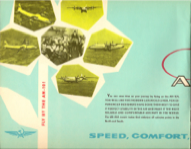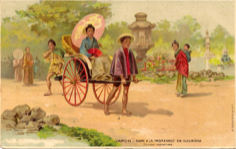Far away places with the strange sounding names
My father always maintained he had a relative in South Africa. Well, I presume to have found him! His uncle David (his father William’s elder brother) had a son called, after his grandfather, David Dorward Raitt born in Arbroath in 1897. David would have been a much older cousin to my father. He seems to have had some accountancy or commercial training and like his grandfather and great grandfather clearly had a taste for the sea and far away places.
He must have gone to South Africa in his early twenties and clearly his job involved some nice trips, for he arrived in London in July 1926 from Brisbane, Australia aboard the Garth Peninsula. His age was 28, his occupation was given as clerk and his country of residence was given as South Africa. In July 1929, as a 35 year old commercial agent, he lived in Northern Rhodesia and embarked on the Glengorm Castle at Cape Town bound for London. He presumably came back to Glasgow to get married, in 1930, to Nora Louisa Nichol from Edinburgh. He made a similar trip from Cape Town to Southampton in May 1934 on the Winchester Castle. In August 1945 he embarked at Sydney for London on an unspecified ship. His age was given as 44 and his occupation was business manager. His last and future country of residence was Northern Rhodesia. A few years later, he travelled from Cape Town to Southampton in April 1949 on the Warwick Castle. His age was given as 48, occupation was manager, and residence was Northern Rhodesia. Then in June 1959, he again travelled from Cape Town to Southampton on the Athlone Castle. Around 60, his occupation was given as accountant, and his country of residence was South Africa.
But at least two other cousins of my father, siblings of the above David Dorward, went to live abroad. His elder sister Mary Purvis Raitt arrived in New York on 28 May 1928 from Glasgow aboard the SS California. She was 33 and her occupation was given as typist. It looks as though she didn’t stay there long because it looks like her in the 1930 census for Los Angeles where she was a nurse. She clearly went back to Glasgow on a couple of occasions because she arrived again in New York on 23 March 1946 on an overnight Pan American Airways flight! Her occupation was children's nurse and she was going to a family in New Jersey. Her immigration form says that she initially came to the US for employment in 1926 and was a permanent resident. She was aged 51, single, 5ft 1in tall, was of pale complexion, and had grey hair and grey eyes. She arrived again in New York on 25 May 1956 from Prestwick on another Pan American World Airways flight.
David Dorward’s (and Annie Purvis’s younger brother, Edward Duncan Raitt left Glasgow aged 21 and arrived in Boston, Massachusetts on 1 Oct 1923 aboard the Tuscania. His occupation was instrument maker. Maybe that was just a test run because he arrived back in New York a couple of years later and gave up making musical instruments to become an airplane mechanic. He met his wife Elizabeth, also from Scotland, in New York and they married in Brooklyn in 1928. He and his wife obviously returned to Glasgow because they, and their two children, arrived in New York from Southampton on 15 January 1948. The final residence was in Florida – far away from the cold and rain of Scotland they had left half a century previously.
And this is not counting the trips that our great grandparents and theirs made even earlier. On 13 July 1866, for instance, James Dorward Raitt, age 27, arrived in Sydney, New South Wales aboard the Sir John Lawrence from London. He was 2nd mate. He made the same trip a year later on 12 June 1867. David Dorward Raitt, his brother (both uncles of the David Dorward, Mary and Edward Raitt above), made trips to Canada, Greenland, Iceland, America, South Africa, the North Pacific and the Baltic as well as to many European ports.
Fascinating stuff – we are used to travelling all over the place by plane nowadays – but what must it have been like on a Pan Am flight in the 1940s? And what was it like travelling by steamship. The time it must have taken. It was clearly all the rage though – two of my grandmother’s brothers (Lindsay family) went by sea to New Zealand in 1921 and came back once – again by ship, another brother emigrated to Argentina after the 1st World War, another brother emigrated to Canada in 1903 and a sister followed him there in 1912. For the longer voyages – South America, New Zealand, South Africa – the ports of call en-route are so evocative. It must have been exciting at times, but boring at others. What level of comfort did they have in second class? But what sites they must have marvelled at as we do today when we take a trip to some faraway place.
Thursday, 25 February 2010




